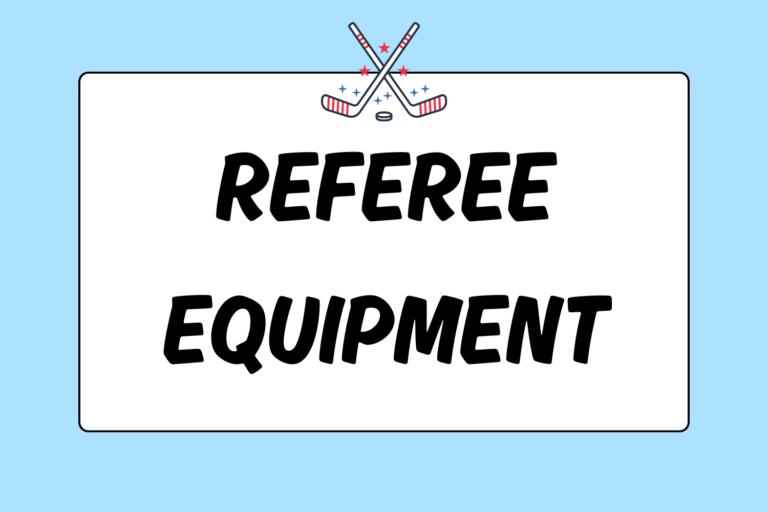The butterfly slide is one of the flashiest and most impressive tools in a goaltender’s arsenal. If executed correctly, the maneuver allows goalies to slide from post to post and completely protect the bottom portion of the net.
Butterfly slides may seem easy at first glance, but they take a lot of time to learn, and even more time to master. This guide explains sliding, as well as some tips for improving your slides.
Two Types of Butterfly Slides
There are essentially two different types of butterfly slides: One from a ready stance, and one when already in the butterfly position on the ice. This guide focuses on butterfly slides while already in the butterfly position on the ice. Analyzing how to butterfly slide from a ready stance would be superfluous, because you have to start in the butterfly position either way.
Slide Mechanics
When you’re first learning how to butterfly slide, you should begin the process at an open skating session. You need to learn the basic movements outside of practice or game situations. Follow these steps to butterfly slide for the first time:
- Start on the ice in the butterfly position.
- Lift your pushing leg’s knee so that your leg pads are almost perpendicular to each other.
- Shift your weight towards your pushing leg. Keep your weight on the inside edge of the push leg’s skate. This position is often referred to as being “loaded.”
- Push off of this inside edge laterally in the direction of your leading leg.
- As you start moving, shift your weight in the direction you’re travelling.
You have the following two options as you travel towards the position on the ice where you want to stop:
- Continue to glide in the butterfly position and let friction on the ice stop you. This method should be used when you’re travelling directly towards the shooter or possible shot (for example: One-timers).
- If you’ve reached the position where you want to stop, put on the breaks by lifting the knee of your leading leg. Shave ice with the inside edge of your lead leg until you come to a stop. From this position, you’ll be able to either butterfly slide back in the direction you came from, or easily pop up into your ready stance.
When you’re first learning to butterfly slide, you might find it helpful to start with your pushing skate against a post. This will help you get the motions down without having to worry so much about having your pushing skate’s edge in the perfect position.
Amazingly True Story
No one exactly “invented” the butterfly style of goaltending, but many goalies over the years contributed to its development and popularity. Vladislav Tretiak of the dominant USSR’s Red Army team was one of the visionaries of the butterfly style, executing it in the 1970s and 80s. National Hockey League legend Patrick Roy was a butterfly master in the 1990s. However, it was a goalie from the 1950s — one who never even used the butterfly in a game — who perhaps made the style possible in the first place. When Jacques Plante started regularly wearing a mask (the first to do so), he made dropping lower in the net safe enough to be a valid strategy. This was the foundation of the butterfly.
Hot Tip: Sharpen Your Skates
For most goalie skates, 5/8-inch hollows are standard, but regardless of what your ideal hollow is, consider going 1/8th of an inch sharper when you’re first learning how to butterfly slide. A bit more bite in your pushes will go a long way in helping you learn the technique.5
Practice Time
Going to a free skate and doing laps is one of the best ways to practice butterfly slides. First, go to a less-occupied section of the rink. Start in the butterfly position, facing the boards. Push in one direction, and then reload your push leg and repeat. Do this for either 10 pushes, or until your leg gets tired. Then switch legs and continue. Continue practicing until you’re fatigued, and then skate a couple laps before trying to slide again.
When team practice comes around, talk to your coach and get permission to work on butterfly slides during any one-timer drills. Start these drills on your knees and in the butterfly position. Then, when the puck-carrier passes, try to cover the gap with a butterfly slide.
The combination of constant repetition (practicing at free skates) and in-game situational practice (one-timer drills) will make your butterfly slide movements second nature… which they must be, come game-time!
Watch & Learn
Before you start practicing how to butterfly slide, make sure you understand the mechanics of the slide. Read and re-read this guide, and watch the related videos, paying close attention to the way the goalie moves from side-to-side.
Once you’ve developed a solid understanding of the movements required to make a butterfly slide, the only thing left to do is practice as much as possible. Work on your slides before and after practice, at open skates, and during scrimmages when the play is in the other zone. Spend as much time as you can on the ice and you’ll be sliding with the best of them in no time.





